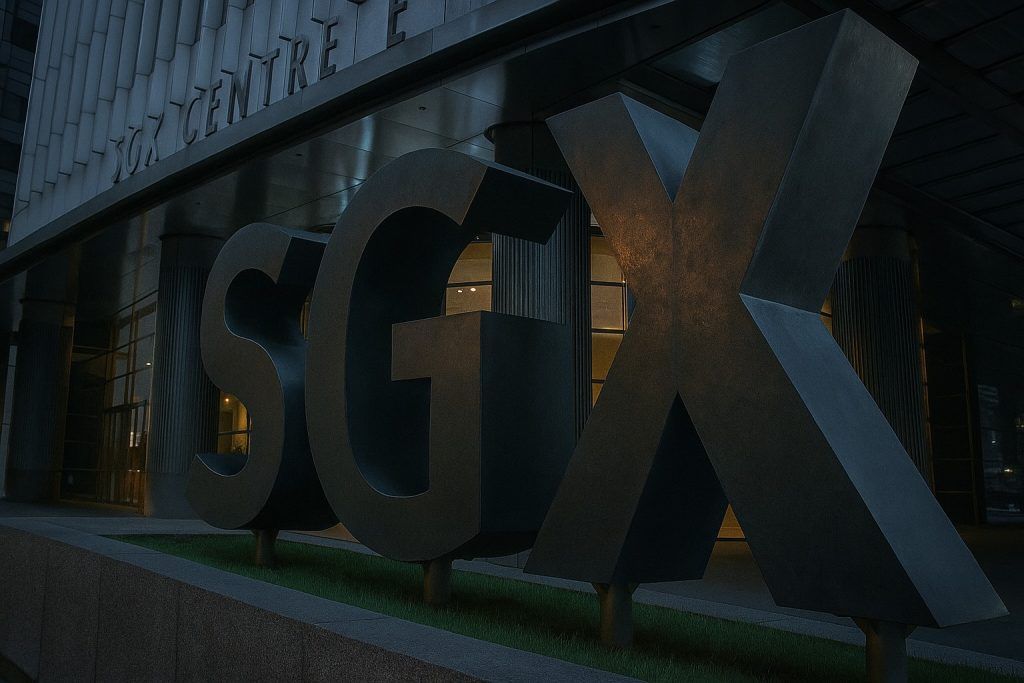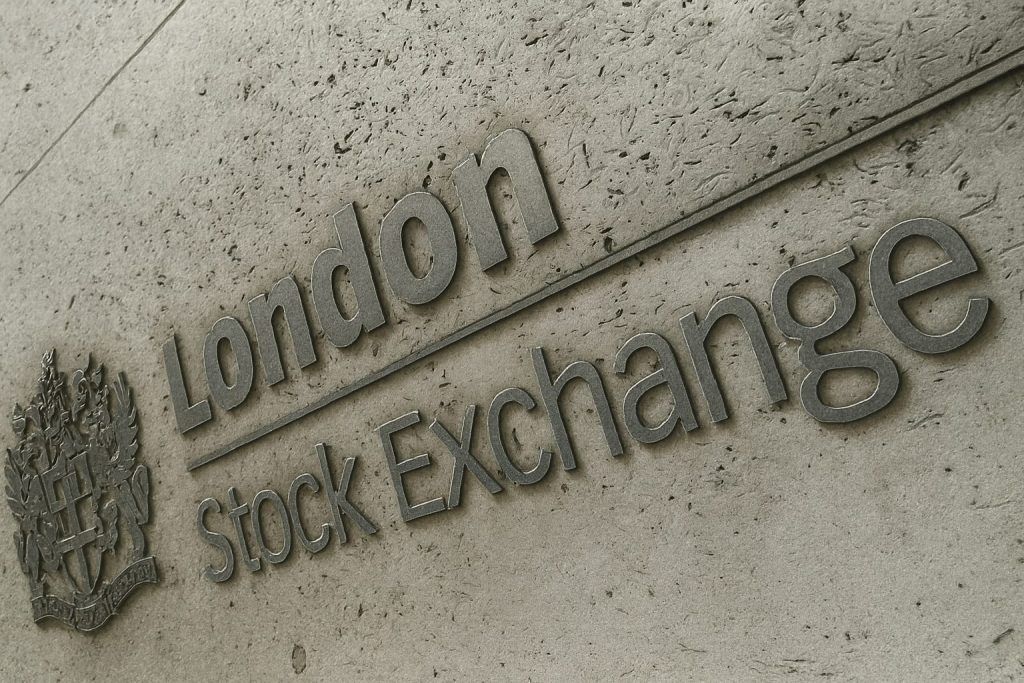- ASX edges higher: The S&P/ASX 200 reversed early losses to finish up roughly 0.2% at ~8,895 points [1], while the broader All Ordinaries was virtually flat (~9,174 points) [2]. Five of 11 sectors rose, led by financials, tech and energy, countering declines in health care and mining [3].
- Banks surge on earnings beat:Westpac Banking Corp jumped 2.8% to a record closing high after its full-year profit (~A$7 billion) modestly beat expectations, buoying the entire banking sector [4]. Commonwealth Bank climbed 2.3%, helping lift the ASX 200 into positive territory [5].
- Mining laggards – gold & rare earths: Gold miners sank 1.4% as bullion prices eased on a stronger USD and global trade optimism [6]. Evolution Mining fell 2.5%. Rare earth stocks plunged – Lynas Rare Earths tumbled 8.1%, the index’s worst performer [7] [8], amid sector headwinds despite positive project news.
- Tech and energy outperform: The tech sector rallied with network firm Megaport soaring 7.6% after a broker upgrade [9]. Oil & gas producers led resource gains – Woodside added 1.3% as crude prices rose following an OPEC+ pause on production hikes [10].
- Cautious mood before RBA meeting: Trading sentiment was guarded ahead of the Reserve Bank’s policy decision (due Melbourne Cup Day). Markets widely expect rates to hold at 3.6% after a recent inflation surprise dashed hopes of any November rate cut [11] [12]. Volume was moderate as investors stayed on the sidelines awaiting central bank cues.
Market Overview: Indices End with Modest Gain
Australian shares managed a slight rise on Monday, November 3, 2025, as the market shrugged off early weakness. The benchmark S&P/ASX 200 closed up 0.2% at 8,894.8 points [13], rebounding from morning lows. This marks a small advance following a tepid 0.4% gain for the entire month of October [14], indicating that the index remains near record-high territory. The broader All Ordinaries index of 500 companies was almost unchanged, dipping just 0.05% to 9,173.5 [15]. Overall, the market “finished roughly where it began” the day [16], as strength in banking and tech shares balanced losses in resource and healthcare stocks.
Global leads were mixed but largely supportive. Wall Street ended last week on a positive note (S&P 500 +0.3% Friday) while major Asian markets were mostly higher on Monday (Japan’s Nikkei +2.1%, Hong Kong +0.6%) [17]. This provided a mildly positive backdrop for Australian equities. However, sentiment was capped by caution ahead of Tuesday’s interest rate decision. “Reduced rate cut hopes” after a shock inflation reading kept the index’s gains in check [18] [19]. The Australian dollar ticked up to around US$0.655, reflecting steady confidence in the domestic outlook [20].
In terms of market breadth, advancers and decliners were evenly matched. Five of the ASX’s 11 sectors finished higher, notably financials, information technology, and energy, while healthcare and materials (mining) were the biggest drags [21]. Traders noted that with the Reserve Bank of Australia (RBA) meeting looming, there was little appetite for big directional bets. “Investors largely held their ground ahead of the central bank’s policy decision this week,” Reuters reported, underscoring the day’s cautious tone [22].
Banking Sector: Westpac Leads a Financials Rally
Bank stocks staged an impressive turnaround, spearheading the market’s recovery after a soft start. The ASX 200 financials index climbed ~1.3% on the day [23]. Much of this strength came from Westpac Banking Corporation, whose stock surged 2.8% to an all-time closing high [24]. Westpac – Australia’s third-largest lender – announced an annual net profit of A$7.0 billion, slightly topping analyst estimates and “improving in the second half” of the fiscal year [25]. The bank also unveiled the sale of its RAMS mortgage portfolio for A$21.4 billion, further bolstering investor sentiment [26].
Westpac’s robust result “showed an improving trajectory… and net interest margins are improving,” observed Morningstar equity strategist Lochlan Halloway [27]. This upbeat assessment helped ignite a broader bank rally. Commonwealth Bank of Australia jumped +2.3%, and peers ANZ and NAB notched smaller gains [28]. The big-four lenders’ collective strength added significant points to the ASX 200’s tally [29]. Notably, Westpac’s stock is up ~21% year-to-date, far outperforming the ~12% gain in the ASX 200 financial index over the same period [30]. This outperformance reflects investor confidence in bank earnings amid high interest rates.
The rally extended to second-tier financials as well. For example, wealth manager HMC Capital rose +4.8% after its affiliated HealthCo REIT resolved tenant issues [31]. However, not all in finance prospered – insurance stocks lagged. Steadfast Group, an insurance broker, plunged 7.0%, extending losses after a disappointing annual meeting update [32]. Overall, though, the “big bank cohort” provided enough firepower to keep the market in positive territory [33]. Analysts noted the bank earnings season continues this week (National Australia Bank reports Thursday), which could “continue to spur the sector” if results remain solid [34].
Resource Stocks: Gold Miners Glitter Fades, Rare Earths Hit Hard
The materials and mining segment struggled on Nov 3, acting as a counterweight to the banks. Gold miners were notable losers, as a dip in global gold prices prompted investors to take profits after a stellar year for the precious metal. The ASX gold sub-index has skyrocketed nearly 90% in 2025, on track for its best year in decades, but Monday saw some pullback [35]. Northern Star Resources and Evolution Mining fell roughly 2.0%–2.5% [36]. With bullion easing amid a stronger U.S. dollar and optimistic trade sentiment, gold stocks shed about 1.4% as a group [37]. “Gold miners are a leveraged bet on the price of gold,” explained Morningstar’s Halloway, noting that their outsized year-to-date gains left them vulnerable to even a small dip in gold prices [38] [39]. Despite the day’s decline, many gold producers remain up dramatically this year thanks to the earlier unprecedented rally.
Rare earth mining stocks fared even worse, extending a sharp slump from late October. Lynas Rare Earths Ltd – Australia’s leading rare earth producer – plunged 8.1% to multi-month lows [40]. This made Lynas the single biggest loser on the ASX 200 for the session [41]. The sell-off came despite news that the Malaysian government will co-invest $145 million in a magnet plant joint venture involving Lynas [42]. Analysts suggest broader factors are at play: rare earth prices have been softening, and easing U.S.–China trade tensions have curbed the “safe haven” appeal of the sector. Over the prior week, Lynas shares slid nearly 19% amid reports that improving trade ties could undercut rare earth demand [43]. Other miners in the critical minerals space also sank, dragging the materials index into the red.
On the upside, energy stocks provided a bright spot within the resources arena. Global oil prices inched higher after the OPEC+ coalition agreed to pause planned production increases into next year, a move that buoyed sentiment in the oil market [44]. Australia’s largest petroleum producer Woodside Energy rose +1.3% on the day [45], and Santos Ltd. also notched gains. The S&P/ASX 200 Energy index was among the top-performing groups, as investors wagered that stable or higher oil prices will boost oil & gas earnings. This strength helped offset some of the weakness in mining and metals shares.
Tech and Other Sector Highlights
Technology stocks outperformed the broader market, continuing a recent upward trend. The S&P/ASX All Technology index gained modestly, led by a surge in select tech names. Notably, Megaport Ltd – a cloud networking services provider – skyrocketed 7.6% after Macquarie upgraded the stock and issued a bullish outlook [46]. Megaport’s double-digit rally made it the top percentage gainer in the ASX 200 on Monday [47]. Other tech firms also rose, tracking a positive lead from the U.S. Nasdaq’s advance on Friday. Analysts say stabilizing global bond yields and a more dovish U.S. Federal Reserve stance on future rate hikes have been a tailwind for growth-oriented tech shares.
Meanwhile, the healthcare sector extended its recent weakness. Heavyweight biotech CSL Ltd slid about 1.7%, and medical device maker ResMed sank 4.3% [48]. ResMed in particular has been under pressure amid concerns that new weight-loss drugs could reduce demand for its sleep apnea products. The day’s drop followed a global trend of healthcare stocks lagging in an environment of rising bond yields. Likewise, real estate investment trusts (REITs) were slightly softer – the property sub-index dipped as majors Stockland and Mirvac fell nearly 1% [49]. High interest rates continue to weigh on rate-sensitive property and healthcare shares, contributing to their underperformance.
Elsewhere, consumer and retail stocks were mixed. Investors digested the latest data showing household spending edged up 0.2% in September, driven by non-discretionary purchases like food, health, and fuel [50] [51]. Defensive consumer staples held firm, whereas discretionary retailers were flat to down amid a cautious spending outlook. Utilities and communications sectors saw little movement, as investors rotated into cyclical winners like banks and out of some defensive names. Overall, Monday’s trading session saw a clear split in sector performance – cyclical and growth sectors (financials, tech, energy) outperformed, while defensives and interest-sensitive sectors (healthcare, property) lagged. This reflects shifting investor preferences as economic signals evolve.
Macroeconomic Drivers and Market Sentiment
Economic news and central bank expectations heavily influenced sentiment on Nov 3. Traders were squarely focused on the RBA’s policy meeting set for the next day (Nov 4) – a high-stakes event coinciding with Melbourne Cup Day. Early last week, a hotter-than-expected inflation report upended the market’s interest rate outlook. Official data showed consumer prices jumped 1.3% in Q3, lifting annual CPI to 3.2% (from just 2.1%) – above the RBA’s target range [52]. More alarmingly, the trimmed-mean core inflation measure accelerated to 3.0% year-on-year (from 2.7%), marking the first re-acceleration since 2022 [53]. This “shock” inflation spike “seemed to rule out any imminent rate cuts,” according to Reuters [54]. Indeed, market pricing for a November rate cut collapsed to under 10% (from ~40% prior) in the aftermath [55]. By Monday, investors overwhelmingly expected the RBA to hold the cash rate steady at 3.6% the next day [56], instead of delivering the rate cut that had once been anticipated.
Mixed domestic data releases at the end of October added to the cautious mood. On one hand, building approvals rebounded strongly (dwelling approvals +12% in September) and household spending rose modestly [57] [58], indicating pockets of resilience in the economy. On the other hand, forward-looking indicators pointed to cooling conditions. The ANZ-Indeed job advertisements index fell 2.2% in October, the fourth consecutive monthly decline, leaving job ads 7.4% lower than a year ago [59]. “Labour market conditions have softened recently,” noted Callam Pickering, an economist at Indeed, who added that fewer job ads could foreshadow a rising unemployment rate [60]. Despite this emerging slack in jobs, inflation remains uncomfortably high. A private Melbourne Institute inflation gauge showed prices rose another 0.3% in October, with annual underlying inflation running at 3.2% [61]. As Pickering concluded, “nasty inflation figures” mean the RBA “won’t cut rates” this week even with a softer jobs outlook [62]. In short, Australia’s macro picture is mixed: growth is slowing and the labour market is loosening, but price pressures persist – a recipe for the RBA to stay on hold near-term.
External factors also played into market sentiment. In China, Australia’s largest trade partner, the latest private manufacturing PMI dipped to 50.6 (from 51.2), signaling a slight cooling in industrial activity [63]. Although Chinese factories are still expanding (above 50), the deceleration – alongside falling export orders – added to global growth worries [64]. However, these concerns were counterbalanced by optimism around global trade: hopes that U.S.–China trade tensions might ease have risen, improving risk appetite (and contributing to the aforementioned strength in the Aussie dollar and equities). Additionally, the U.S. Federal Reserve’s recent signals of a likely pause in rate hikes have provided a tailwind to international markets [65]. Australian investors took note of the Fed’s more dovish stance and a modest rally on Wall Street, which helped the ASX “surge from well behind to finish just in front” by the close [66].
Overall, trading volume was moderate and volatility subdued as the market lacked a decisive catalyst ahead of the RBA. The day’s news flow gave “mixed” economic signals [67], reinforcing a wait-and-see approach. The cautious mood was evident in sectors like utilities and REITs, which saw little action, and in the bond market where yields stabilized after spiking on the inflation news. Investor focus now turns squarely to the RBA announcement and Governor Michele Bullock’s commentary for clues on future policy direction.
Outlook: RBA Decision and Market Forecasts
All eyes are on the Reserve Bank of Australia’s November 4 meeting, with economists near-unanimous that the cash rate will be held at 3.60% [68]. Given the recent inflation surprise, any thought of a rate cut has been tabled – in fact, markets are pondering whether a rate hike is even a remote possibility if inflation fails to trend down. However, the consensus is that the RBA’s new Governor will stand pat, maintaining a tightening bias but refraining from any move on Melbourne Cup Day. Commonwealth Bank’s economics team, for instance, noted that after the hot CPI, they “abandoned their call for one more rate cut” in early 2026 and now expect an extended hold on rates [69]. Similarly, all of Australia’s major banks have now pushed out expectations for any rate relief – “ruling out cuts in November and for the rest of 2025,” according to market commentary [70]. The immediate outlook for equities will hinge on the RBA’s tone: a neutral or dovish tone could reassure investors, while any hawkish surprise would likely jolt interest-rate-sensitive stocks (especially housing and utilities).
In the short term, market analysts foresee the ASX navigating a narrow range as it digests central bank decisions and a late trickle of corporate earnings. The banking sector will remain in focus with NAB’s full-year results due Thursday, which could either extend the bank rally or cause profit-taking if results disappoint. Additionally, U.S. Federal Reserve policy will play a role: the Fed’s recent decision to hold rates steady (and hints at being near peak rates) has underpinned global risk sentiment. If overseas markets continue to strengthen on hopes that global tightening cycles are done, the Australian share market could find support for a year-end Santa Claus rally. Conversely, lingering inflation and higher bond yields still pose a risk to equity valuations. “Equities will likely remain range-bound unless more certainty emerges around peak or falling interest rates,” advised analysts at Morgans, an Australian brokerage [71]. This suggests significant upside might be capped until investors see clearer evidence that inflation is sustainably easing and that the next move in rates is down.
Looking at the medium-term horizon, many experts are cautiously optimistic yet guarded. Current market pricing implies the RBA may not start cutting rates until well into 2026, and even then only very gradually [72]. Futures markets predict the cash rate could bottom out around 3.35% by mid-2026 – implying perhaps only one 0.25% rate cut in the next 18–24 months [73]. “It would take a material rise in unemployment and much more moderate inflation to bring the RBA back to the easing table,” explained CBA economist Belinda Allen after the latest data [74] [75]. In other words, the bar for lower rates is high. For the stock market, this “higher-for-longer” interest rate environment means investors may favor quality companies with strong balance sheets and pricing power. Sectors like financials and energy (which benefit from inflation and higher rates) could continue to outperform, while growth stocks and rate-sensitive sectors may face headwinds if economic growth slows.
Nonetheless, there are positive catalysts on the horizon. China’s recent modest stimulus measures and a stabilization in commodity prices could provide a boost to Australia’s resource-heavy market in coming months. Likewise, if inflation shows signs of peaking by early 2026, anticipation of eventual rate cuts (even minor ones) might spur renewed enthusiasm for equities. Some strategists are eyeing the first half of 2026 for a potential inflection point: Markets currently see rates “easing cycle faltering,” but only a single cut left to go, with rates staying higher for longer [76]. By mid-2026, if inflation is back within target, the RBA could cautiously trim rates – a scenario that would improve the outlook for consumer-facing sectors and housing.
In summary, the ASX enters November on a cautious footing, balancing solid corporate earnings (exemplified by Westpac’s profit beat) against macro uncertainties. The near-term direction will be heavily influenced by the RBA’s communications and any shifts in global risk sentiment. For now, investors appear encouraged by strong bank profits and resilient pockets of the economy, but they remain vigilant for any sign of changing winds. As one market commentator quipped, the RBA’s Melbourne Cup Day decision “is unlikely to stop the nation” [77], but it will certainly set the tone for the final stretch of 2025 in Australia’s financial markets.
Sources: Official ASX data, Reuters [78] [79] [80] [81], ABC News [82] [83] [84] [85], Commonwealth Bank/AAP [86] [87], Bloomberg [88], and Australian Bureau of Statistics insights.
References
1. www.indopremier.com, 2. www.commbank.com.au, 3. www.commbank.com.au, 4. www.indopremier.com, 5. www.indopremier.com, 6. www.indopremier.com, 7. www.abc.net.au, 8. www.abc.net.au, 9. www.abc.net.au, 10. www.abc.net.au, 11. www.indopremier.com, 12. www.reuters.com, 13. www.indopremier.com, 14. www.indopremier.com, 15. www.commbank.com.au, 16. www.commbank.com.au, 17. www.abc.net.au, 18. www.commbank.com.au, 19. www.commbank.com.au, 20. www.abc.net.au, 21. www.commbank.com.au, 22. www.indopremier.com, 23. www.indopremier.com, 24. www.indopremier.com, 25. www.indopremier.com, 26. www.abc.net.au, 27. www.indopremier.com, 28. www.marketindex.com.au, 29. www.indopremier.com, 30. www.bloomberg.com, 31. www.abc.net.au, 32. www.abc.net.au, 33. www.abc.net.au, 34. www.abc.net.au, 35. www.indopremier.com, 36. www.indopremier.com, 37. www.indopremier.com, 38. www.indopremier.com, 39. www.indopremier.com, 40. www.abc.net.au, 41. www.abc.net.au, 42. www.abc.net.au, 43. finance.yahoo.com, 44. www.abc.net.au, 45. www.abc.net.au, 46. www.abc.net.au, 47. www.abc.net.au, 48. www.abc.net.au, 49. www.abc.net.au, 50. www.marketindex.com.au, 51. www.marketindex.com.au, 52. www.reuters.com, 53. www.reuters.com, 54. www.reuters.com, 55. www.reuters.com, 56. www.indopremier.com, 57. www.abc.net.au, 58. www.marketindex.com.au, 59. www.abc.net.au, 60. www.abc.net.au, 61. www.abc.net.au, 62. www.abc.net.au, 63. www.abc.net.au, 64. www.abc.net.au, 65. www.marketindex.com.au, 66. www.abc.net.au, 67. www.abc.net.au, 68. www.indopremier.com, 69. www.reuters.com, 70. au.finance.yahoo.com, 71. fnarena.com, 72. www.reuters.com, 73. www.reuters.com, 74. www.reuters.com, 75. www.reuters.com, 76. www.reuters.com, 77. www.abc.net.au, 78. www.indopremier.com, 79. www.indopremier.com, 80. www.reuters.com, 81. www.reuters.com, 82. www.abc.net.au, 83. www.abc.net.au, 84. www.abc.net.au, 85. www.abc.net.au, 86. www.commbank.com.au, 87. www.commbank.com.au, 88. www.bloomberg.com







